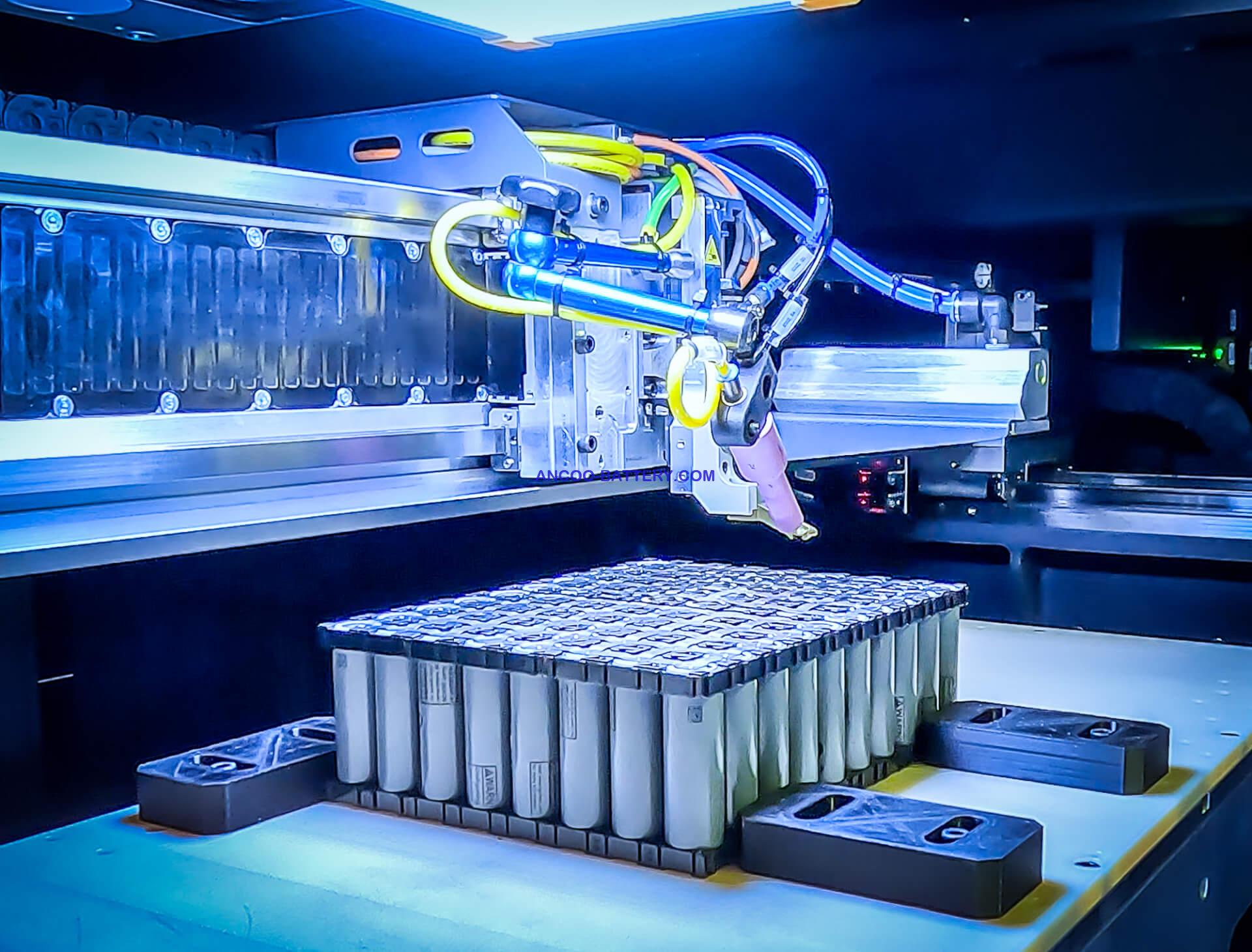Battery Laser Welding for Battery Pack Manufacturing
Laser welding is one of the most promising joining technologies for EV batteries and energy storage systems. It provides the speed and precision needed to make the thousands of welds that connect tabs and busbars in battery packs, modules, and cells.
All types of battery cells can be laser welded, including cylindrical cells, prismatic cells, and pouch cells. Laser welding is being implemented for a wide range of electric battery applications:
Electric vehicles (cars, taxis, etc.)
Electric commercial vehicles (forklifts, trucks, buses, airplanes, ships, etc.)
Recreational electric vehicles (motorcycles, bicycles, four wheelers, jet skis, boats, etc.)
Energy storage systems
To match your high current and high power requirements for battery packs, we have introduced high tech Transistor spot welding machines and automated laser welding machines.

The Benefits of Laser Welding Technology
Meet High-Speed Production Requirements
With more than 6kW of laser power, the welding speed can be scaled to meet short cycle time requirements.
Lasers also require minimal maintenance, so they are ideal for production line automation.
Minimize the Heat Affected Zone
Laser welding can be optimized for minimal heat input. As a result, batteries do not suffer from excessive heating and maintain better mechanical properties.
Join Dissimilar Metals
Lasers can weld dissimilar materials with varying fusion temperatures without the need for filler material. Examples include steel-copper, steel-aluminum, aluminum-copper, and steel-nickel.
Adapt Quickly to Production Variations
Laser parameters can be updated automatically for different needs. This is ideal if you are working with multiple module and pack designs involving various cell types and busbar thicknesses.
The welding process can also be updated on the fly for different thicknesses.
Customize Welding Patterns
Because laser welding is a non-contact technology performed remotely, welding patterns can be customized and optimized for each application. This guarantees strong and reliable bonds regardless of the welding area’s size, shape, or location.
Improve Electrical Conductivity
Metals joined by laser welding have an excellent electrical conductivity and better heat management at the welded joints (due to minimal resistance).
